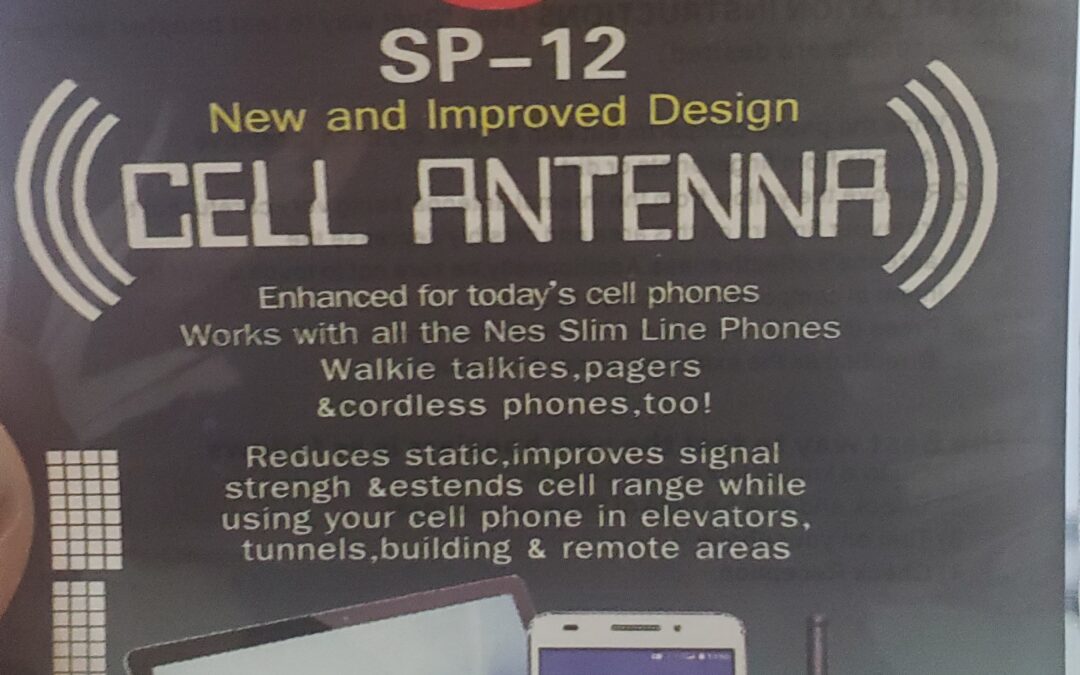If you’ve ever struggled with poor cell reception, you’ve probably come across advertisements for stick-on cell phone antenna boosters. These thin, metallic stickers promise to amplify your phone’s signal, offering a quick fix to dropped calls and slow data. But do these boosters actually live up to their bold claims? In our ongoing myth-busting series, we put these products to the test and dove into the science behind mobile signals. Here’s what we discovered about stick-on cell phone antenna boosters and why they simply don’t work.
Testing Stick-On Cell Phone Antenna Boosters: The Results
To get a clear answer, our team conducted a series of controlled tests using several popular stick-on antenna boosters. We attached the boosters to a range of smartphones in areas with both strong and weak signal reception. With signal strength meters. It is important to use objective measurements rather that subjective observations. This gives an actual number to compare rather that a possibly biased opinion. Humans can have a way of seeing what they want to see and there is often a desire for the item you just purchased to work or the misplaced idea that most vendors would not just lie. We compared results with and without the booster in place.
The outcome? Across all tests, the stick-on boosters made no significant difference. Signal strength readings remained consistent with or without the sticker. The only signal variations observed were normal small, insignificant changes with no bias with or without the sticker. Our findings echoed what many independent reviewers and experts have reported: these products simply don’t work as advertised.
Why These Boosters Fail: Signal Loss and Misconceptions
These units claim to pick up stray signals from the case and re-radiate them.
So why don’t these boosters work? To understand, it’s important to know how cell phones receive and transmit signals. Modern smartphones are already engineered with highly precise antennas, carefully designed to send and receive radio waves efficiently. Simply sticking a thin metallic sticker near this complex system doesn’t enhance its function—in fact, it can do the opposite by introducing unwanted signal interference or reflection.
One big misconception is that adding any metal to your phone can “attract” more signal, similar to how old TV antennas worked. But mobile signals don’t work that way. The radio frequency energy your phone uses is finely tuned, and any external, non-engineered component just disrupts the carefully balanced system. Instead of boosting the signal, these stickers often just become one more obstacle for the electromagnetic waves to navigate.
Signal loss is another key issue. When radio waves hit a poorly placed piece of metal, like a stick-on booster, they can be absorbed or scattered, reducing the efficiency of your phone’s built-in antenna. Radiation signal loss occurs when energy that should reach your phone’s receiver is diverted or blocked, which can actually worsen your reception. Rather than enhancing your signal, these gadgets often introduce more problems than they solve. There is a case where passive antennas can be used to relay a signal inside a building but one of the calculations that goes in to that is a 36dB (That is a lot) radiation loss. It is a temptation to believe that any additional signal would be an improvement, but signals traveling different paths must be in phase to gain anything, making the signal from the randomly placed sticker, if any, both insignificant and more likely to hinder than help.
In the end, the science and our hands-on testing agree: stick-on cell phone antenna boosters are a myth. They might look high-tech or sound promising in advertisements, but they provide no real improvement to your phone’s reception. Modern smartphones already have sophisticated antennas built in, and the best way to improve your signal is to move closer to a window, go outside, or invest in a legitimate signal amplifier designed for your environment. Stick-on boosters, unfortunately, belong in the world of busted tech myths.
Additionally the manufacture claimed that these would work on Walkie Talkies. This further stretches credibility since antennas are tuned to specific frequencies, the frequency of a walkie talkie of vastly different from a cell phone. The typical FRS Radio operates at 462MHz whereas cell phones operate in many bands from 600MHz to 39GHz. Again signal level measurements showed no difference with or without the sticker.
The signal level measurements were done with a signal level application on the phone, and an Anritsu spectrum analyzer.
